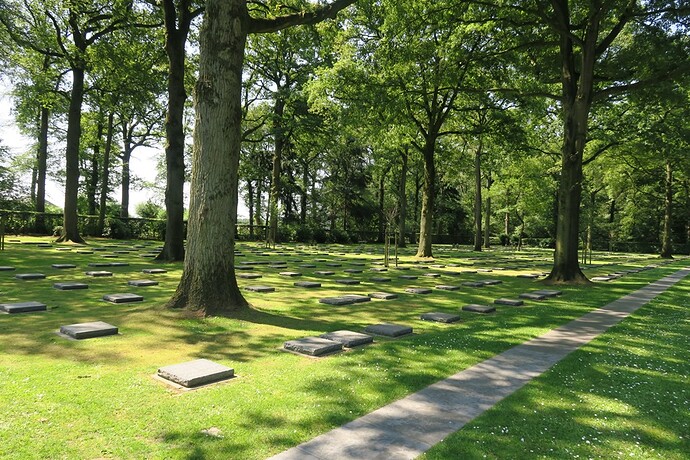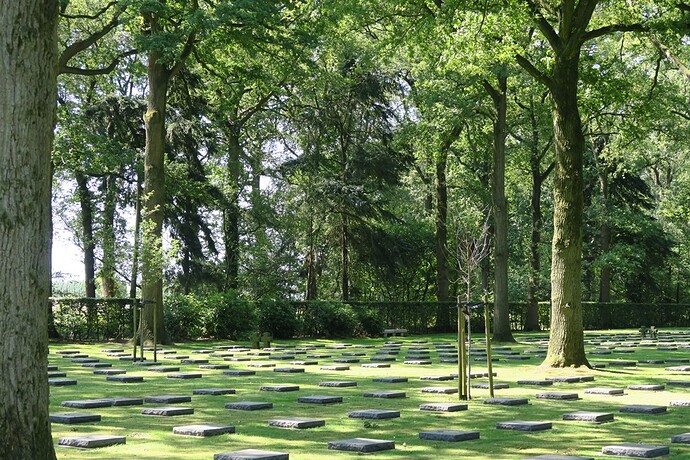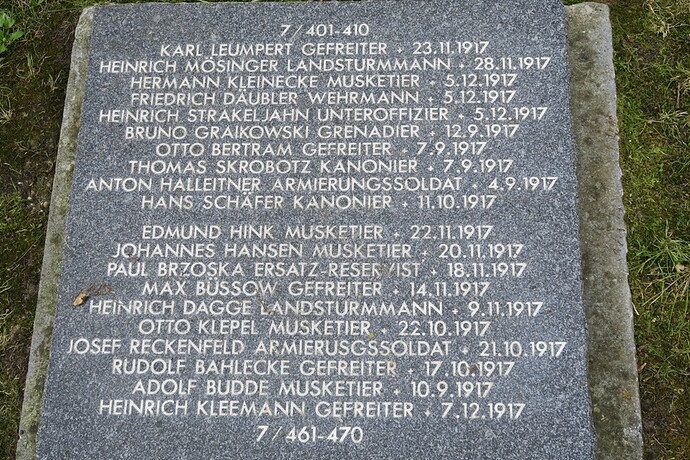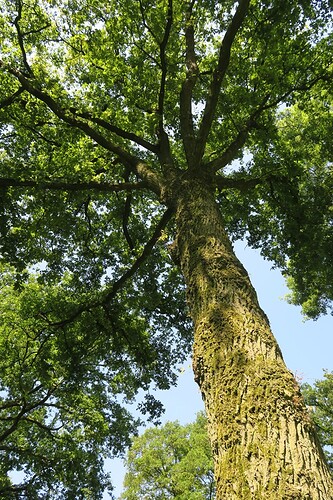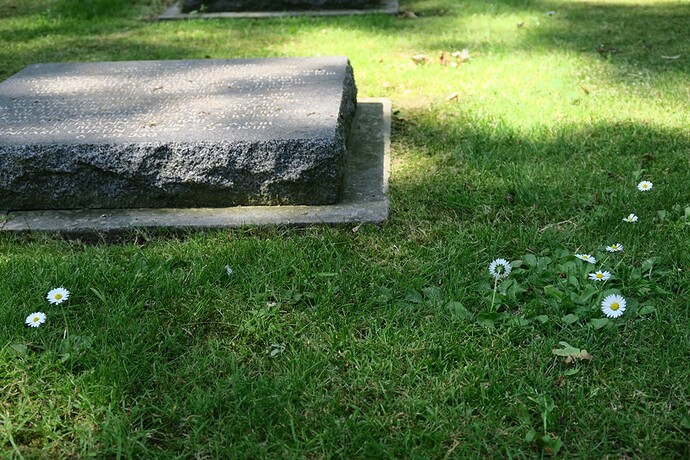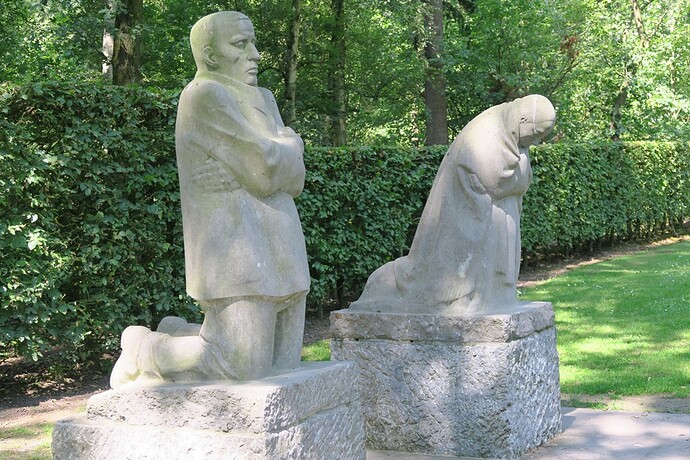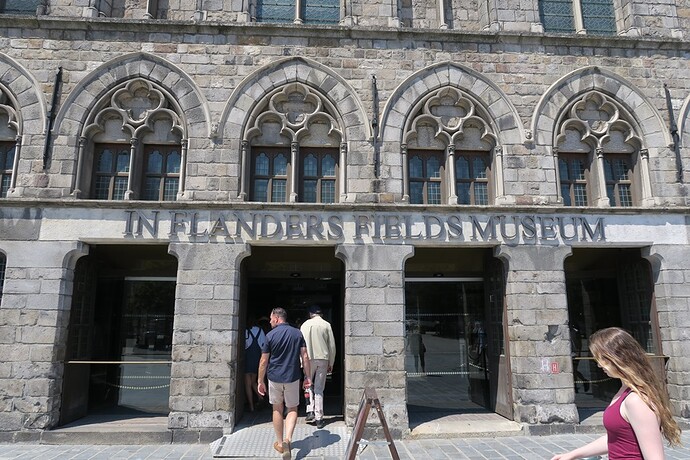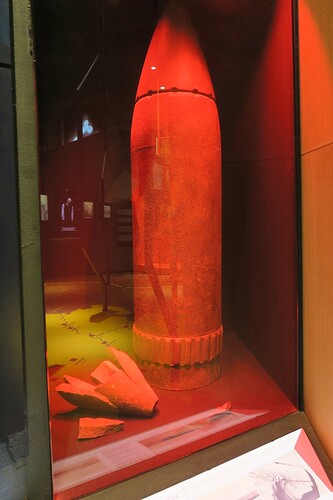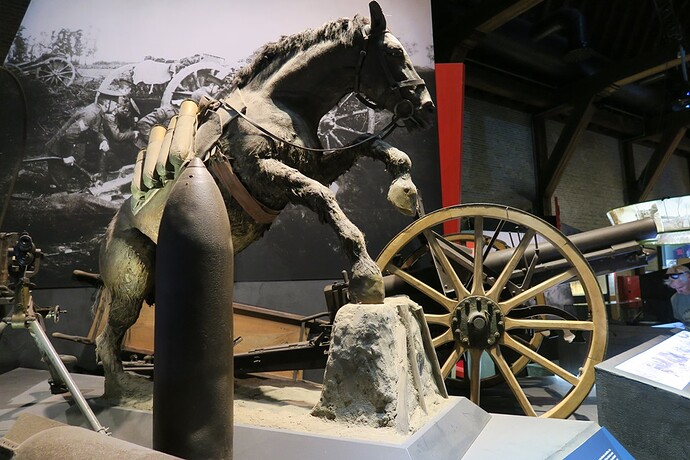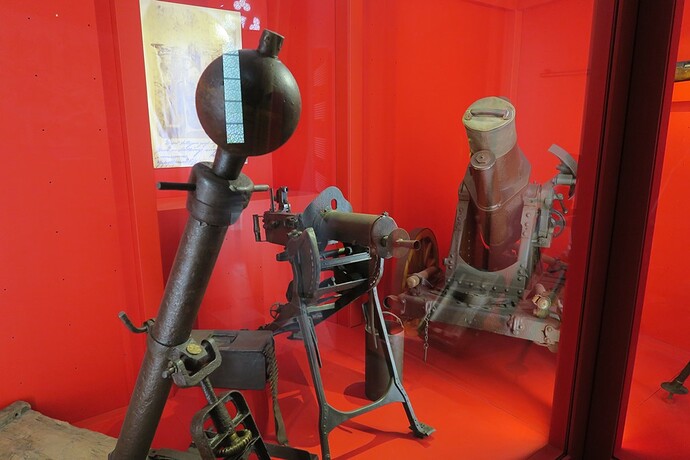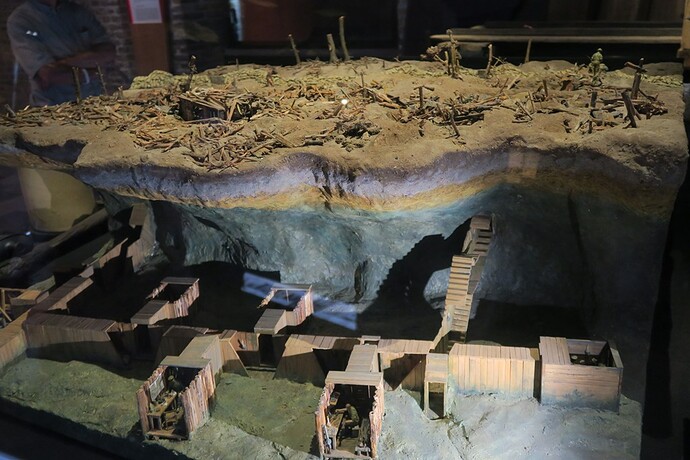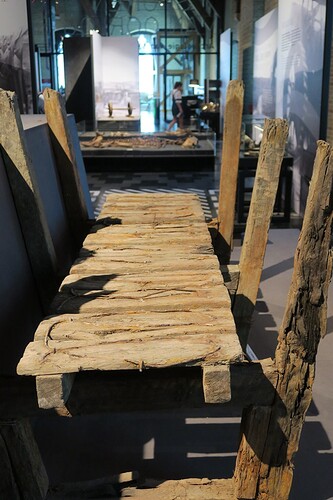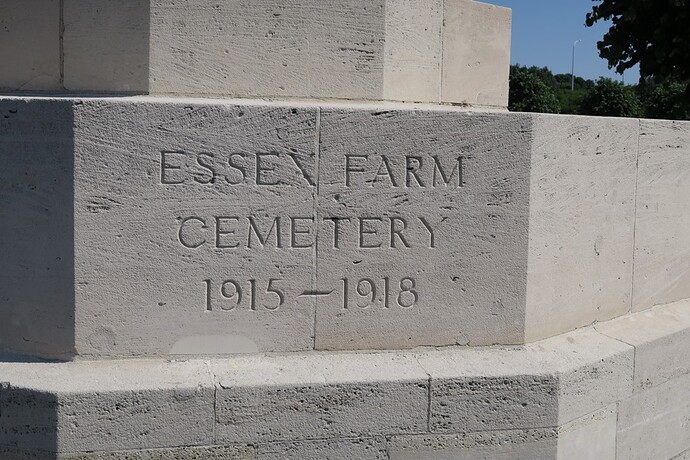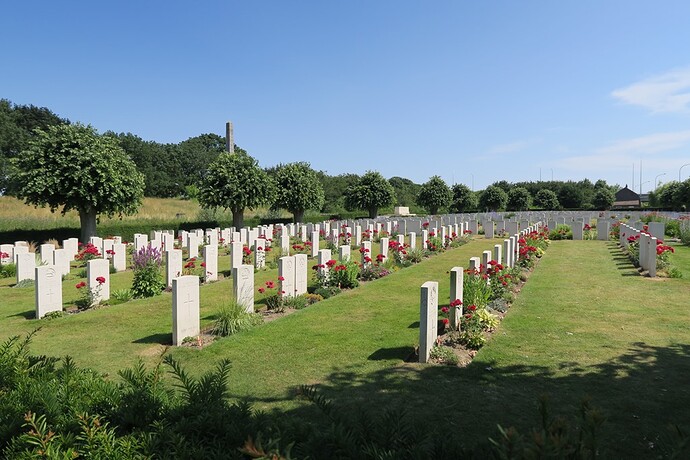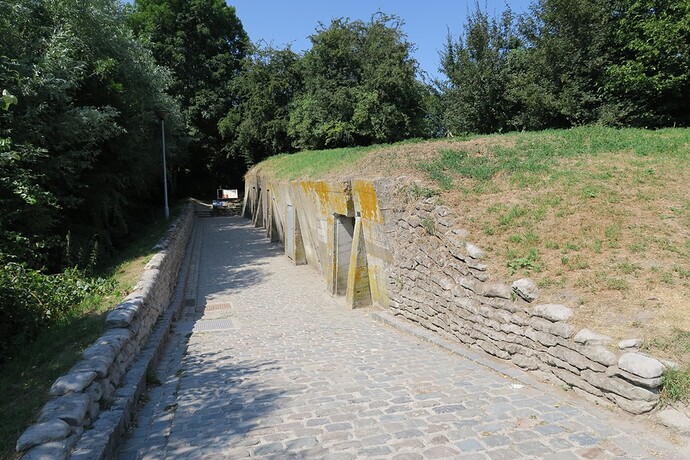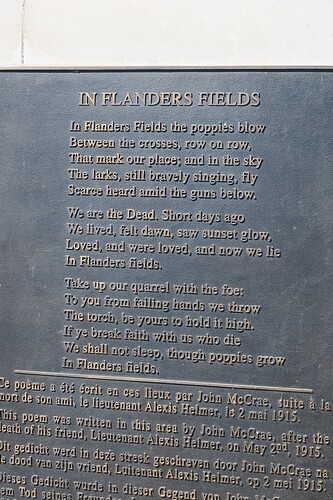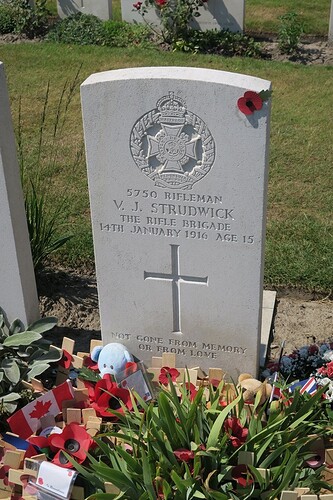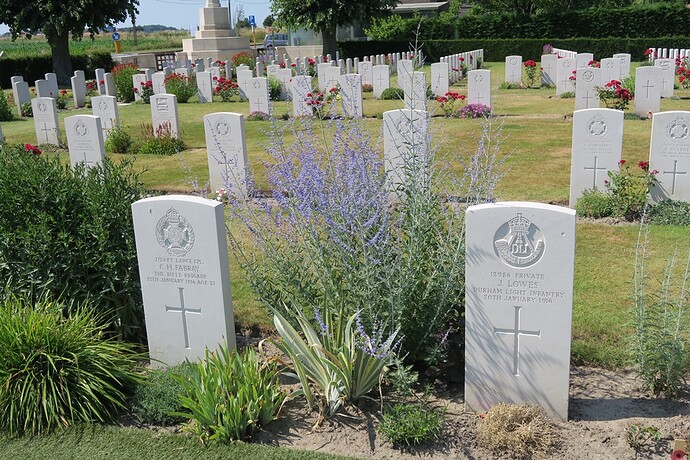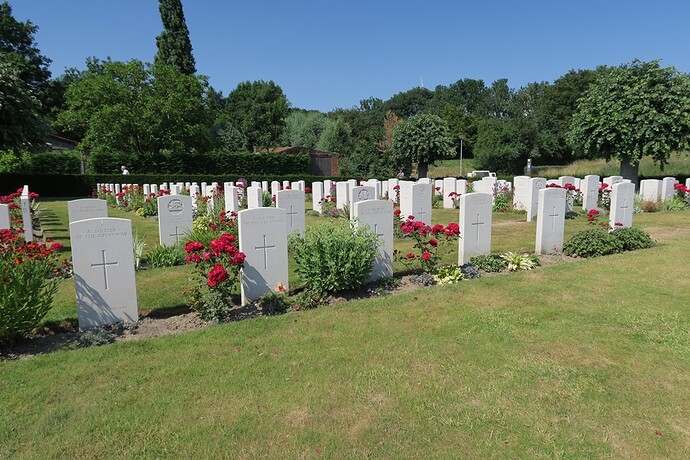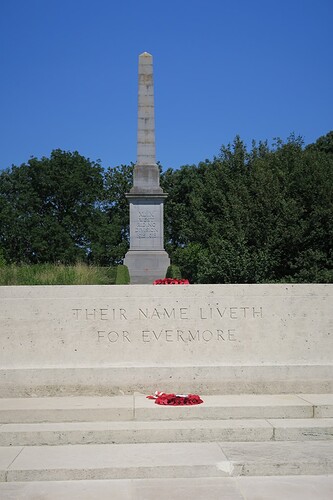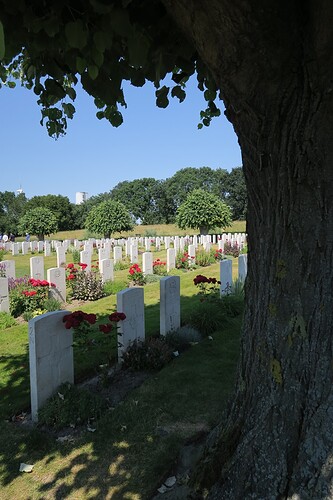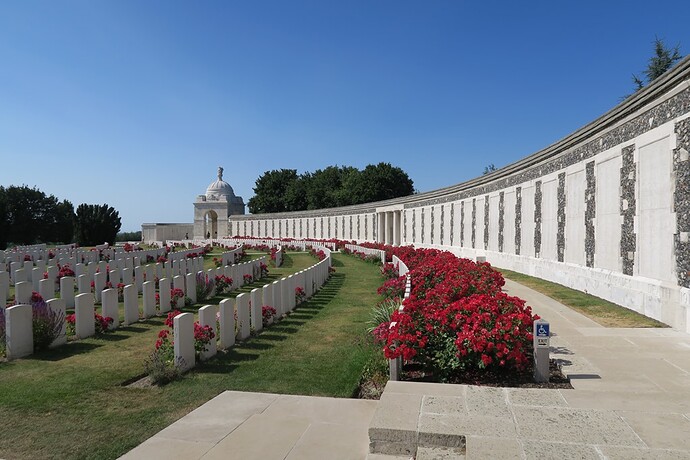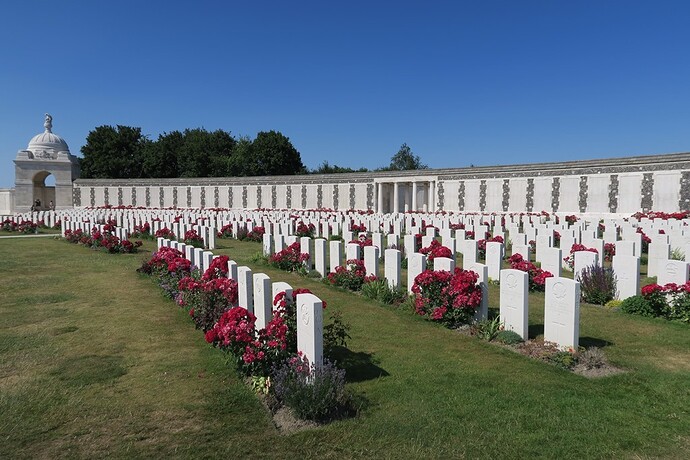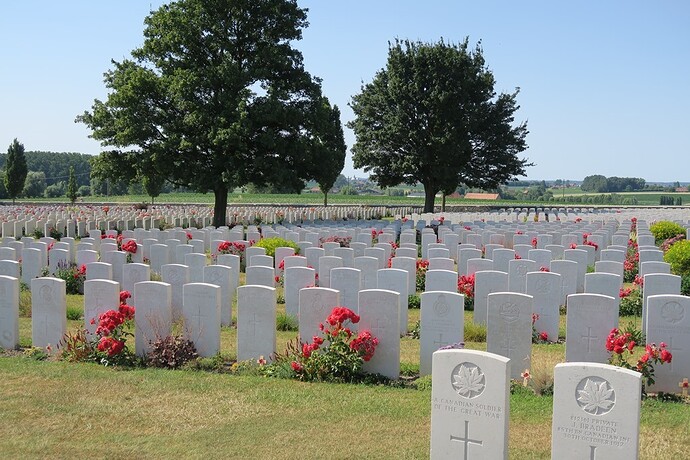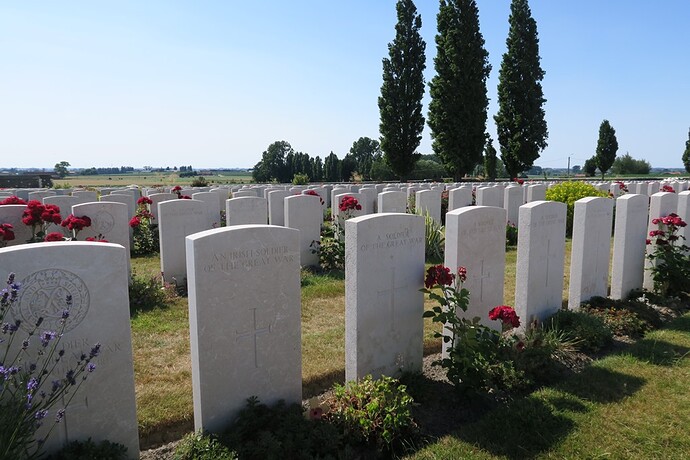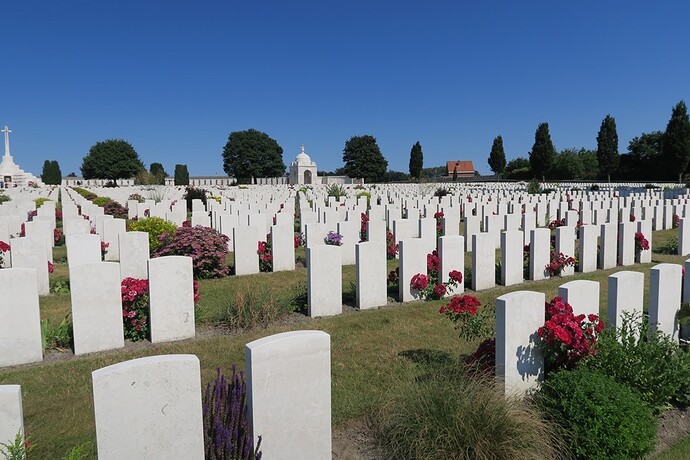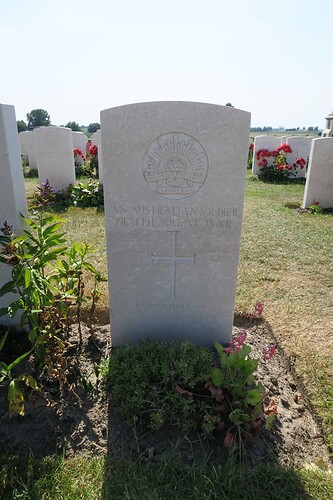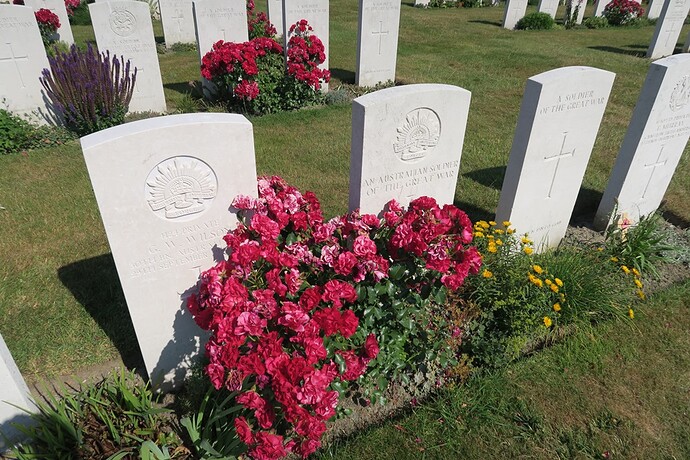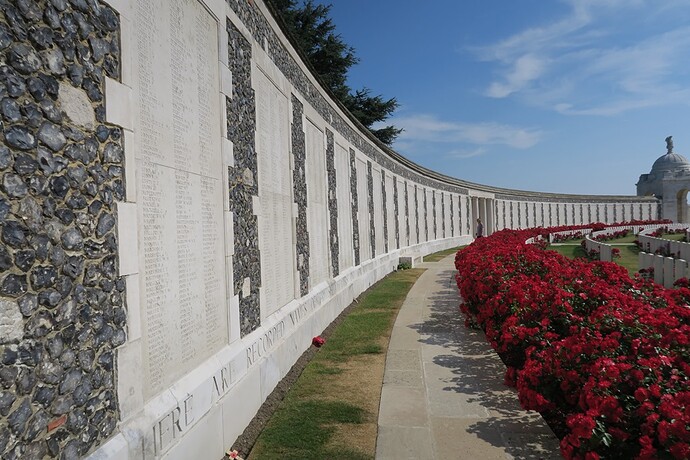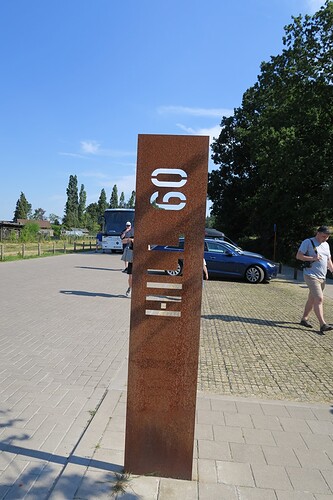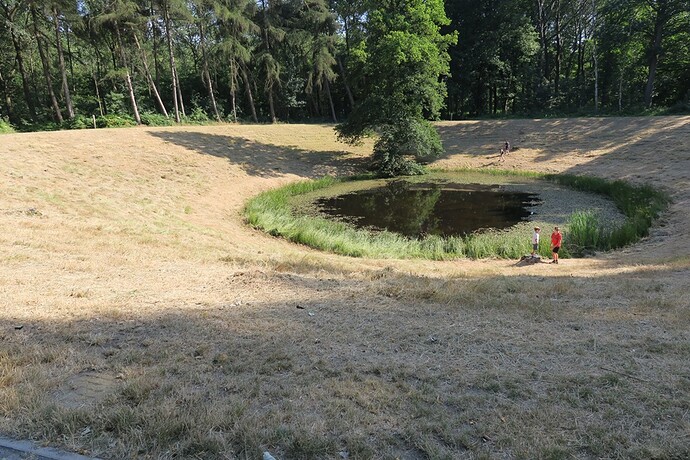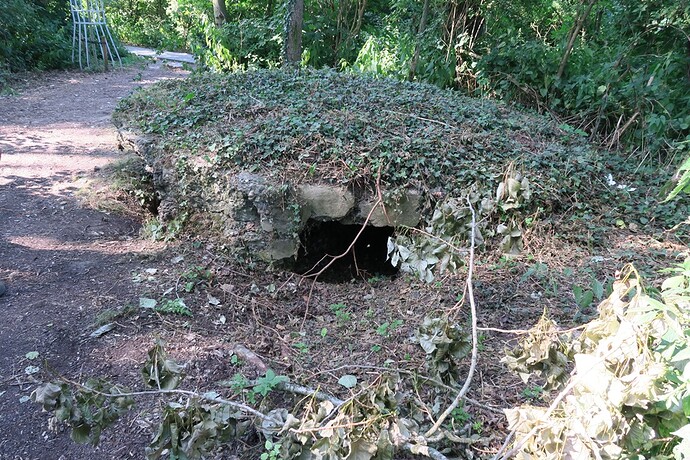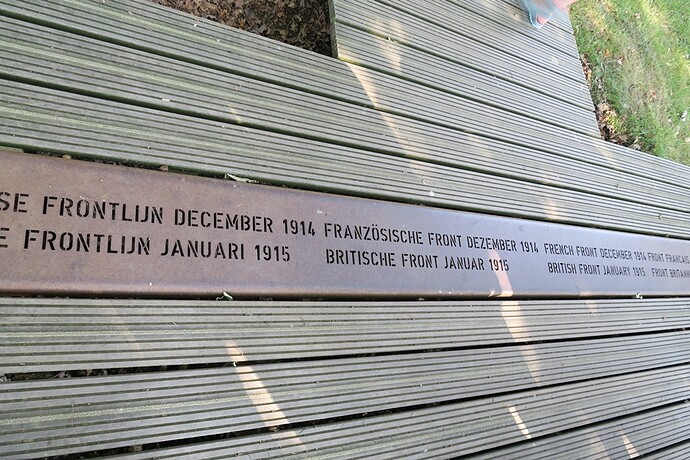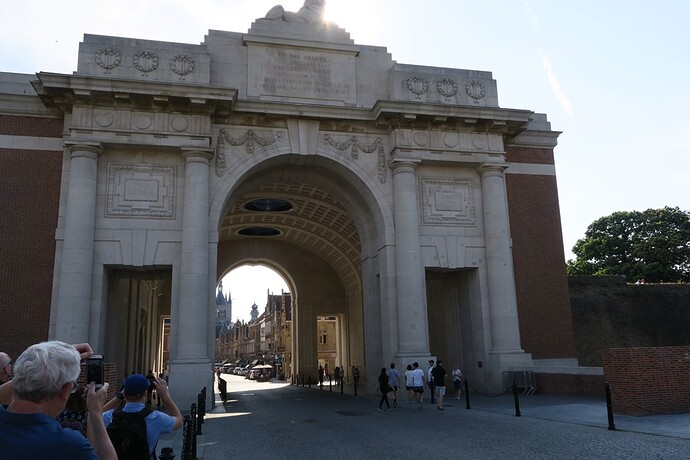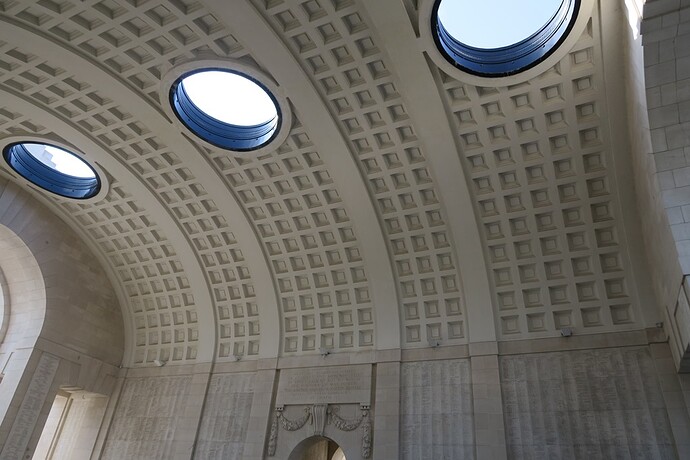Booked to do a full day tour of Flanders Fields, leaving my hotel at 8am and not arriving back until 11.30pm made for quite a day. An inspiring, sombre day of young lives cut short and needlessly lost. Stories of heroics, mateship and atrocious conditions. The duality of humanity that can create weapons and tools of destruction on one hand and to look out for, care and sacrifice for each other on the other.
The scale of destruction is never more poignant when you see aerial photographs overlaid on the modern day equivalent, the verdant green, the coloured fields of various crops, trees and houses against the sheer desolation and carnage that thousands of tonnes of artillery, marching feet, relentless rains can do to a landscape. So much so you almost become blasé to wanton destruction you see in photo after photo.
We arrived at a German cemetery (Vladslo) on the way to Ypres, you walk through this idyllic, green expanse, the sunlight dappling onto the ground, the German Oaks watching over the young dead interred here. There is a real sense of ‘at peace’ as the 25,000-odd soldiers lay for eternity, the quote by Schweitzer is utterly honest “The Soldiers’ graves are the greatest preachers of peace”. You then reflect at the sculpture done by one of the mothers of the soldiers there, “Parents in Mourning”, and understand the grief and misery they represent.
Then on to the Flanders Fields Museum, to gain an insight and timeline for the whole war. To see the weapons, various country soldiers kits, to everyday items the soldiers carried and used. This is where you gain an understanding of how the war evolved over the years, how the fronts were constantly evolving, re-shaping with requisite losses of thousands of lives each time. It is surreal exactly how close they were to each other. Lives were nothing but a commodity.
Then we went on to the famous Essex Farm (a field dressing station), which was the inspiration for John McCrae’s poem ‘In Flanders Fields’. As you walk through the impeccably kept headstones, the flowers, shrubs, the grass all kept in stunning condition, there is no litter, no graffiti here. Everyone is utterly respectful to the sacrifices made by those interred here. Our guide stops at one headstone, and asks us what we think, you start reading, there is nothing special, no VC mention, not a famous Brigade and you wonder why he has singled out this particular one out of all the headstones – then you read the final two words… Age 15. (to have such a sense of duty for your country, to lie and trick the recruiting officers to get sent off at such a young age, barely capable of carrying a full kit most likely thinking he was in for a grand adventure – the media didn’t let on about the real conditions). Ask yourself what you were doing at age 15…
Next up was Tyne Cot, which is the largest site of Commonwealth war dead in the world, 12,000 lay here of which over 8000 still remain unidentified. The way the cemetery is laid out you come through the front of it around a walled corner and bang it is laid out in such a large expanse whose enormity takes your breath away. The walls of the cemetery contain the names of 35,000 soldiers who have no known grave, those with graves and not known have a simple inscription ‘Known Unto God’. It is a beautiful place to be, so serene, the abundance of flowers, shrubs all kept in wonderful condition. Most are from the various battles around Ypres with the single most coming from Passchendaele (3rd Battle of Ypres). It is a truly humbling experience walking around here, reflecting on the sacrifices made, you try and imagine what it must have been like and you think of your own mates and losing them in similar circumstances, or your brother or your father and you start to become quite emotional. FACT: Of the 205,000 British Empire soldiers who died in Belgium in WWI almost half have no known grave as their bodies were never found or could not be identified.
The cemetery, has a slope like say Martin Place in Sydney, yet it was seen as a huge strategic advantage due to the flatness of the land, this idea lead us to Hill 60, a small hill created after the building of a railway. This small hill was deemed so important that mines were dug underneath and packed with explosives which created the massive crater. Many thousands of lives were lost as it went back and forth, there are inscriptions on the ground where the respective front lines were over the years.
Then the final event of the evening was listening to the Last Post being played at Menin Gate in Ypres. This has been going every day basically since 1928 and only missed during WWII, they have done over 30,000 last post ceremonies there as thanks to the soldiers who gave their lives to protect Belgium.
Link to Video of Last Post (not sure it will work, click on HD for better picture and sound quality)
A very special day for me.
Lest we Forget.
